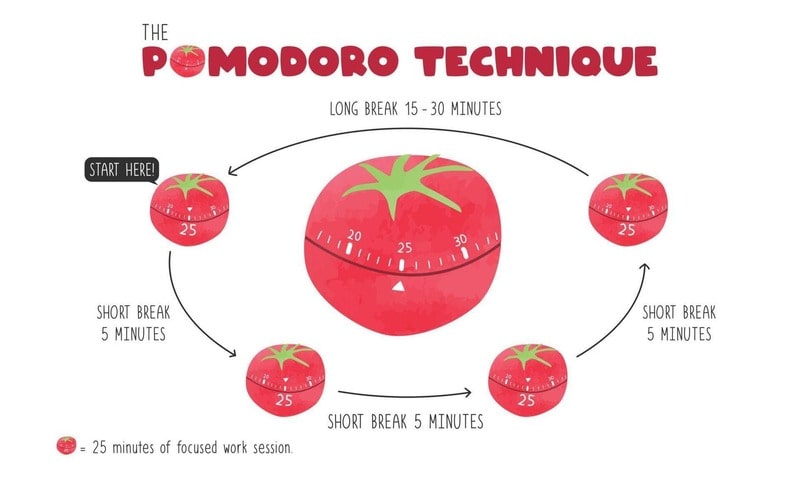Freelancer's Secret: Double Your Productivity & Earnings!

Have you ever felt like you've been sitting at your desk for hours, but at the end of the day, you feel like you haven't accomplished much? This feeling is familiar to many freelancers. The world of freelancing, with all its freedoms and flexibilities, has its own unique challenges. Time management, maintaining motivation, and preventing job burnout are just a few of these challenges. But the good news is that by applying the right strategies, you can significantly increase your productivity and achieve greater successes.
This article is a comprehensive guide for beginner and experienced freelancers to familiarize themselves with scientific and practical principles of increasing productivity and implement them in their professional lives.
Table of Contents
- Creating Structure and Smart Planning
- Time Management and Focus Techniques
- Energy Management and Preventing Burnout
- Using Tools and Automation
- Continuous Learning and Personal Development
- Conclusion
Creating Structure and Smart Planning
One of the biggest challenges of freelancing is the lack of a fixed structure like in a traditional work environment. To increase productivity, you must create this structure yourself. Precise planning and time management are the key to success in this area.
Setting Clear and Measurable Goals
Without specific goals, you're like a ship sailing the sea without a compass. Your goals should be SMART:
- Specific: Exactly what do you want to achieve?
- Measurable: How can you measure your success?
- Achievable: Is this goal realistic?
- Relevant: Is this goal aligned with your overall objectives?
- Time-bound: By when do you want to achieve this goal?
Scientific Tip: Research shows that people who set their goals in writing and with details are 42% more likely to achieve them.
Practical Exercise: Select one of your freelancing goals and rewrite it using the SMART framework. Then ask yourself: "How will I measure my progress?"
For example, instead of saying "I want to do more work," say:
"I intend to complete two new projects and attract three new clients by the end of this month."
Daily and Weekly Planning
Planning is your roadmap to achieving goals. Cognitive psychology research shows that our brains have more focus and motivation when working with structure and predictability.
Daily To-Do List: Every night or morning, note down the tasks you need to accomplish during the day. Prioritize the more important ones.
Work Calendar: Use tools like Google Calendar to schedule meetings, project deadlines, and important tasks.
Time Blocking: Allocate separate time slots for each type of activity (deep work, responding to emails, learning). This method prevents "mental switching" between tasks and increases efficiency.
Tip: Our brains take about 20 minutes to regain full focus after each distraction. Therefore, protecting "focus blocks" is crucial.
Time Management and Focus Techniques
Distractions are the main enemy of productivity. By applying effective techniques, you can make the most of your time.
Pomodoro Technique
This simple yet powerful technique helps you increase your focus and prevent burnout.
- Set a timer for 25 minutes.
- During these 25 minutes, focus only on one task.
- After the time is up, take a 5-minute break.
- After 4 "Pomodoros," take a longer break (15 to 30 minutes).
Exercise: Try apps like Pomofocus or Forest to track and analyze your performance.
Research: Regular use of this technique increases focus, reduces anxiety, and enhances the sense of control over work.
Eliminating Distractions
Your work environment and digital tools can be full of distractions.
- Turn off non-essential notifications.
- Keep your workspace tidy and minimal.
- Use blockers like Cold Turkey or Freedom to limit distracting websites.
Scientific Tip: Each time your focus is interrupted by notifications, it may take up to 23 minutes to return to your previous level of concentration.
Prioritizing Tasks with the Eisenhower Matrix
Not all tasks have the same importance. The Eisenhower Matrix helps you distinguish between "urgent" and "important."
- Urgent and Important → Do it now.
- Important but not Urgent → Schedule it.
- Urgent but not Important → Delegate it.
- Neither Urgent nor Important → Eliminate it.
Exercise: Place the tasks for the upcoming week in this matrix. Focus only on the first two quadrants.
Energy Management and Preventing Burnout
Freelancing can be challenging, and if you don't manage your energy properly, you may suffer from job burnout (Burnout).
According to the "Energy Management" theory, productivity is more related to managing energy cycles than to time.
Regular and Adequate Rest
- Short Breaks Throughout the Day: After every hour of work, walk for five minutes or do stretching exercises.
- Sufficient Sleep: 7 to 8 hours of quality sleep strengthens focus and creativity.
- Scheduled Vacations: Even a few days away from work can rebuild motivation.
Physical and Mental Activities
Physical and mental health directly affect work quality.
- Regular exercise increases dopamine and serotonin levels and enhances mental focus.
- Healthy nutrition (complex carbohydrates, sufficient water, nuts) provides sustained energy.
- Mindfulness practices like meditation reduce stress and increase focus.
Quick Exercise: Close your eyes for three minutes and focus only on your breathing. This resets the brain.
Setting Work and Personal Boundaries
Freelancers often face the risk of overlapping personal and work life.
- Specific Working Hours: Define working hours and stick to them.
- Dedicated Workspace: Even if small, designate a specific place for your work.
- Saying No: Learn to reject projects that exceed your capacity or are unrelated to your goals.
Psychological Tip: The ability to say "no" is one of the components of "self-efficacy" and is associated with higher job satisfaction.
Using Tools and Automation
In the digital age, smart tools can act as your assistants.
Project Management Tools
Trello / Asana / ClickUp: Task management, progress tracking, and project coordination.
Notion: An all-in-one tool for planning, writing, and mental organization.
Suggestion: Have a short weekly review in Notion of completed tasks and learnings.
Communication Tools
Effective communication with clients and colleagues is key to success. Use Slack, Google Meet, and Zoom for transparent interactions.
Automation and Productivity Tools
Zapier / IFTTT: Automating repetitive tasks (like file saving).
Grammarly: For checking text grammar.
Google Drive / Dropbox: Secure storage and file sharing.

Continuous Learning and Personal Development
A successful freelancer is always learning. The online job market is dynamic, and only those who update their skills succeed.
Updating Skills
- Participate in online courses to upgrade skills at appropriate times. For effective and up-to-date learning, you can use Gate site's educational courses.
- Reading books and specialized articles.
- Listening to podcasts related to your field.
Tip: Continuous learning causes dopamine release and strengthens the sense of inner progress.
Building a Professional Network
Networking is as important as skills.
- Events and Workshops: Opportunities for learning and collaboration.
- Activity on LinkedIn: Consistent presence and sharing experiences.
- Mentorship: Having a mentor shortens the growth path several times.
Conclusion
Increasing productivity in freelancing is a continuous process, not a final destination. By implementing these scientific and practical principles, not only will you accomplish more work, but the quality of your life and inner satisfaction will also rise.
Remember:
- Productivity means working smarter, not harder.
- With precise planning, conscious focus, and caring for physical and mental health, you can become the best version of yourself as a freelancer.
